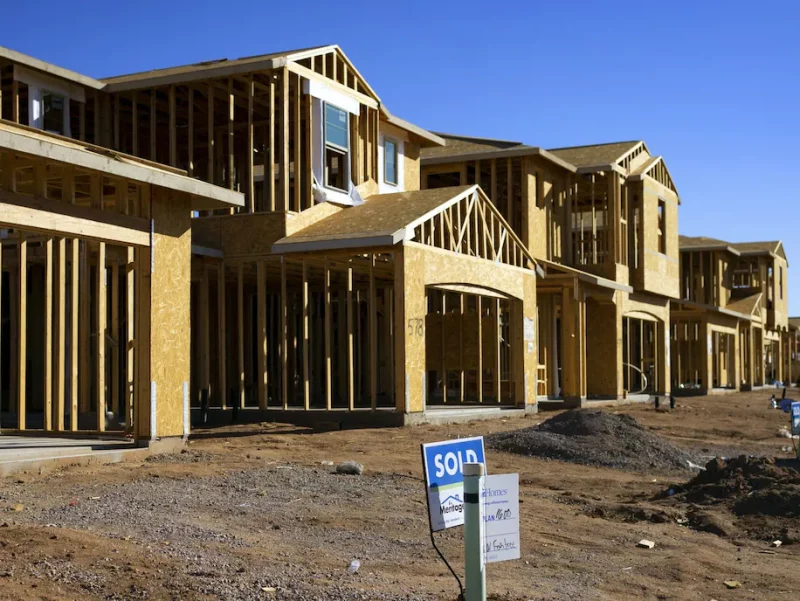Surging mortgage rates have finally cooled off the housing market. The cooldown, though, is coming unevenly, accentuating differences between the existing home market and new construction.
The supply of existing homes, while still below normal, is surging as sales decline. Homebuilder stocks have slumped. Investors were braced for the worst when two major homebuilders last week reported quarterly earnings — along with their market outlook.
Instead, the companies were remarkably sanguine. While acknowledging that the market has slowed, Lennar Corp. and KB Home said that their businesses have been resilient, at least so far. The current economic environment, in which interest rates are rising but — importantly — the labor market remains solid, appears to be tougher for the existing-home market while homebuilders are able to muddle through.
One significant distinction between the two markets is incentives: Homeowners sell for all sorts of reasons; they might not be able or willing to continue paying their mortgage, or they may want to take advantage of higher prices, or just move to pursue other opportunities.
Rising mortgage rates have changed the equation. Homeowners may postpone or refuse a sale to wait for better prices, or be unwilling to sell and purchase a new home at a higher mortgage rate. The economy is more uncertain, putting a chill on opportunistic moves.
Homebuilders, by contrast, exist to sell homes. If they’re not selling, they’re not making money. They’re just as profit-motivated in a 6% mortgage rate environment as they were at 3%.
The second big difference is how the labor market impacts homebuilders and homeowners. KB Home noted that its typical buyer has a household income of $125,000, a credit score around 730, and puts $75,000 down when buying a home. Importantly, people still have their jobs and incomes, so that buyer pool still exists.
What’s changed is how higher mortgage rates affect affordability, and that’s where builders have levers they can pull. They can cut prices and offer sweeteners to buyers; change to a lower-cost product mix, or focus production on stronger markets. So even though buyer interest and home price growth has slowed, demand was so much higher than supply that there’s still enough buyers around for builders to sell the number of homes they want to sell.
It’s different in the existing home market. Homeowners with jobs and comfortable mortgages don’t have to sell. In the 2008 recession that wasn’t the case — millions of people lost their jobs and adjustable-rate mortgages reset at higher interest rates, leading to a wave of forced selling. Motivated sellers had to accept whatever price they could get, which pushed prices lower than they would have accepted if they weren’t feeling such extreme economic pressures.
Another 2022 dynamic is how supply chain problems have hurt the new home market more than the existing home market. If a homeowner wanted to sell in March, they could simply list it and sell it. Whereas builders weren’t able to sell as many homes as they wanted because they’ve struggled to get the supplies to complete them. Perversely, that helps them now.
As recently as May, homebuilders were still limiting the number of homes they’d sell for strategic reasons. On their earnings calls last week, Lennar said it had 250 homes ready for sale at the end of May, and KB Home said it had 69. That’s 319 homes in the entire country for two of the largest homebuilders. Even with buyer demand declining, there’s still room for builders to maintain their sales pace given how production and inventory-constrained the industry has been — particularly when they’re willing to adjust pricing as needed.
None of this may last. Over the next several months builders will catch up on production and mortgage rates will either rise or fall. Perhaps the labor market will worsen and introduce a new dynamic into both markets.
But for the time being, sales are still happening for builders, and they seem confident that will continue at least for the near term.
Source: washingtonpost.com













